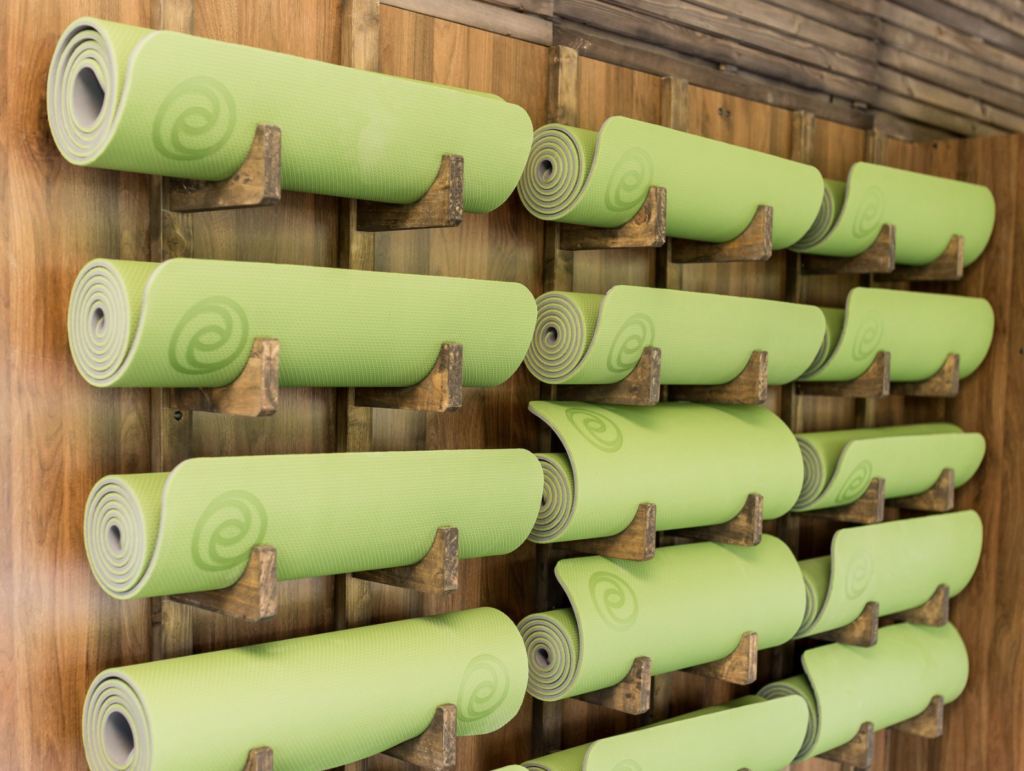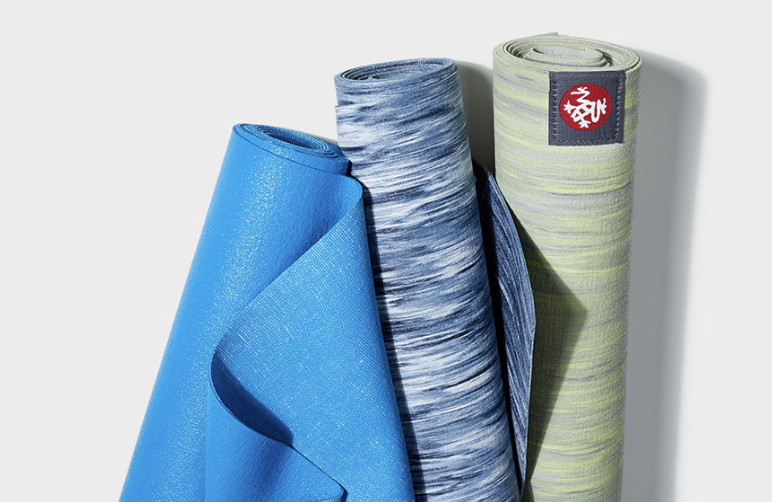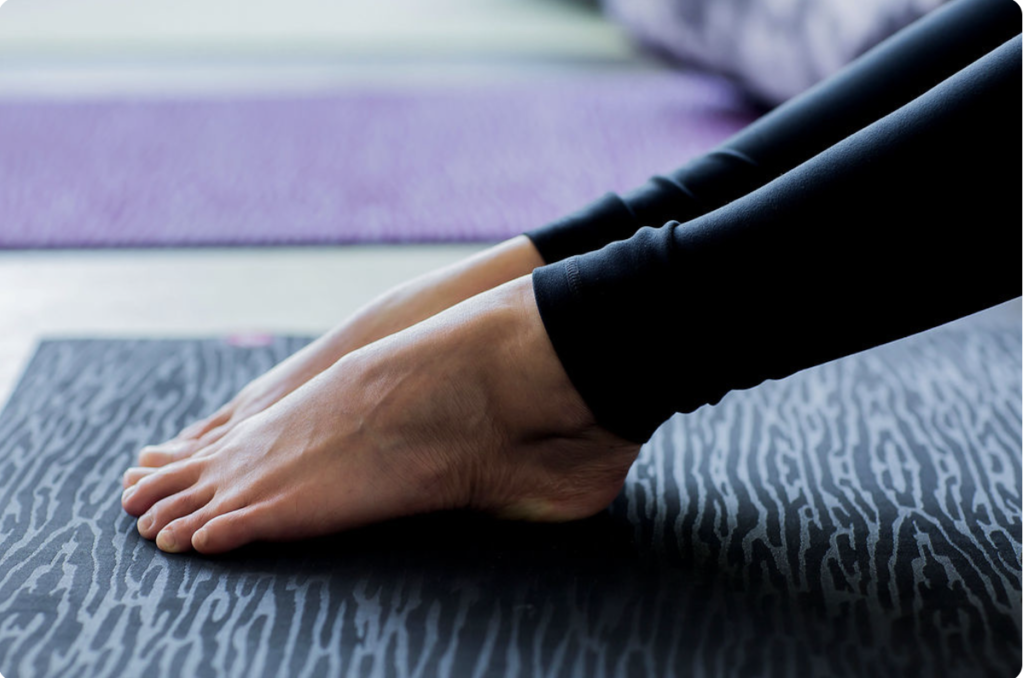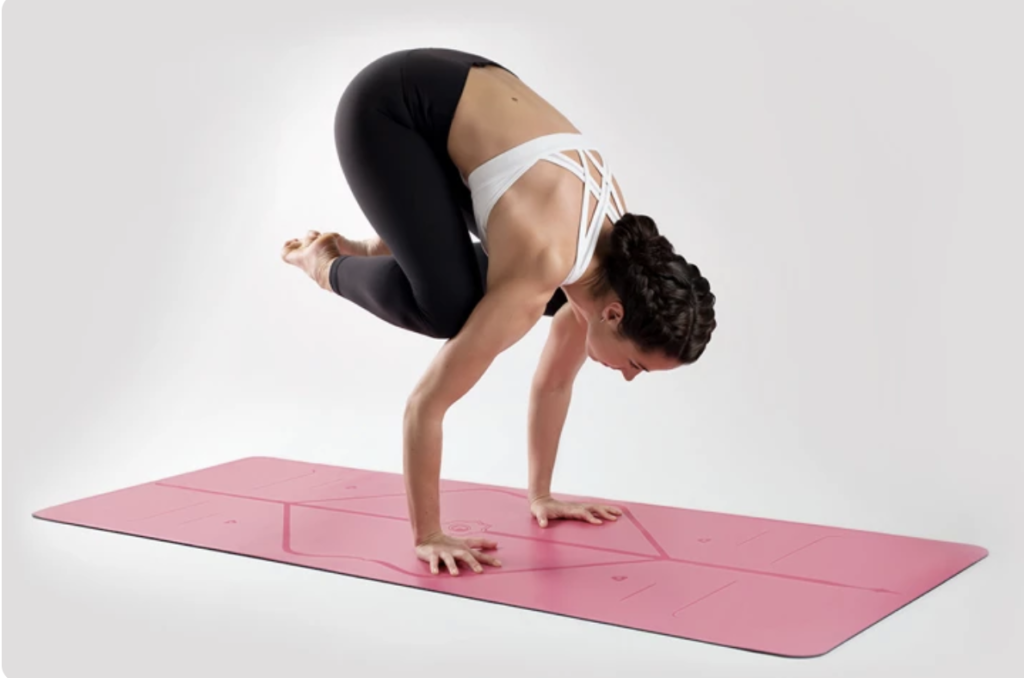
When we practice yoga, we exercise getting in touch with ourselves. Through every swing and every inhale– breathe out while attempting to maintain our body balanced, we explore and expand awareness to our bodies more.
But wait!
Before knocking on the internal door and checking in with ourselves, we also need to pay attention and care to our wonderful friend required in every yoga session – a safe and suitable yoga mat.
But how do we know what is suitable? What criteria do we need to include in our checklist to find a mat that supports both the body and our self-care process? Well, let us help you with the following 5 easy guides for you to find your mat companion.
1. Thickness
This is one of the important criteria that affect our comfort level during exercise. Thin mat, thick mat, arghhh which one to go for? Okay, let’s go through some benefits: Thin mats create a strong feeling, and thick mats offer more protection and help you avoid injury (especially suitable for those who have musculoskeletal problems such as knee degeneration, shoulder pain, gout, or arthritis). But the mat thickness should not be too inclined in one direction.
Too thin mats can numb your knees and make you more prone to pain when doing activities that require lying on a flat surface. And too thick mats can isolate you from contact with the ground, making you feel as if you’re floating on the surface. This will likely cause you to lose the fulcrum and fall more easily, especially when you switch to balance poses.
Too thin, too thick, so how much is enough?
Some common thicknesses of yoga mats you can refer to are: 4mm, 6mm, 8mm and 10 mm. For beginners, the popular choice for optimal mat thickness falls in the range of 6mm – 8mm.

2. Material
The material is one of the most important factors when choosing a yoga mat. This factor directly affects the mat’s quality, durability, and the quality outcome of your practice.
PVC is a plastic-based material with high durability, easy to clean, and offers excellent floor grip. PVC mats, on the other hand, are non-absorbent and can become slippery when we sweat. PVC is latex-free, which is great for those who are allergic to latex; however, it is not biodegradable or eco-friendly as other options.
TPE (thermoplastic elastomer) is a synthetic blend of plastic and rubber polymers. It may be more eco-friendly than PVC, and some are fully recyclable. However, when comparing TPE mats versus PVC with the same thickness, TPE mats are less durable, but they still provide good traction.
Eco/natural mats, though lack decade-long durability compared to PVC, will be the best options for those who prioritize sustainability in their lists. They are made from a variety of sources, including natural rubber, organic cotton, and jute. Eco mats are slightly less grippy on the floor than other options, but their natural texture provides grip for your body.
3. Grip level
In yoga sessions, especially those with high-intensity workouts, we sweat quickly. Therefore, an anti-slip mat is essential to protect us from injuries.
To check the slip resistance of the mat, spread it with the mat on the floor, and use the pressure of your hand to push the mat forward. If the hand slides on the mat or the mat slides on the floor easily, we should look at other options, because the easy slide shows the low slip resistance, which can hurt you when practicing.

4. Texture
The traction provided by your yoga mat is determined by its texture. Texture, similar to grip level, affects how much you slide and move. It creates physical barriers against sliding (whereas moisture relies on suction). Since texture affects how a yoga mat feels, it is also a factor in overall comfort.
If you want a non-slip yoga mat and avoid PVC mats at the same time, look for a raised, tactile pattern on a rubber, jute, or cotton yoga mat. The raised texture provides grids that can help you stay in place no matter how sweaty or vigorous your practice becomes.
If you prioritize smoothness, a PVC yoga mat is the way to go. And, if you enjoy stickiness but are curious about newer, more eco-friendly options, ‘test drive’ a few before buying. Even without the traditional “sticky” feel, some green yoga mats may surprise you with how much traction they offer.
5. Style and design
When you have narrowed down your options by thickness, material, moisture, and texture, it’s time to turn to a more “fun” factor: design and style. While the aesthetic has no bearing on functionality, it is important to choose a mat that is pleasing to the eye. Interesting colours, patterns, or prints that appeal to you will likely spark more motivation and joy when you practice yoga. Practicing yoga is meant to be fun and enjoyable as it is.

Yoga is a type of exercise that reminds us to connect and enjoy. We hope that through this article, you will be able to find a ‘companion’ to inspire and support that love in you!
[the_ad_group id=”201″]
 Every Second Shopping
Every Second Shopping



